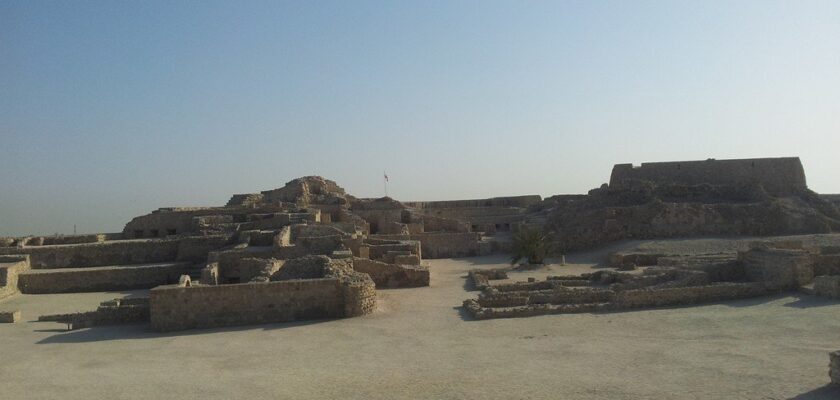Qalat-al-Bahrain (Bahrain Fort)
Qalat-al-Bahrain is an archaeological site in Bahrain. It is also known as Fort Bahrain or Nadir Shah’s Fort. The site was designated a UNESCO World Heritage Site in 2005. To date, about 25% of the site has been excavated.
.Qalat al-Bahrain is an artificial hill built by the locals between 2300 BC and the 18th century. A number of different nationalities, from the Portuguese to the Persians, were involved in the construction of the fort. Qalat al-Bahrain was once the capital of the civilization that existed on the island of Dilmun. The role of the hill has changed many times since then; for a long time it was, for example, a regular Portuguese fortress.
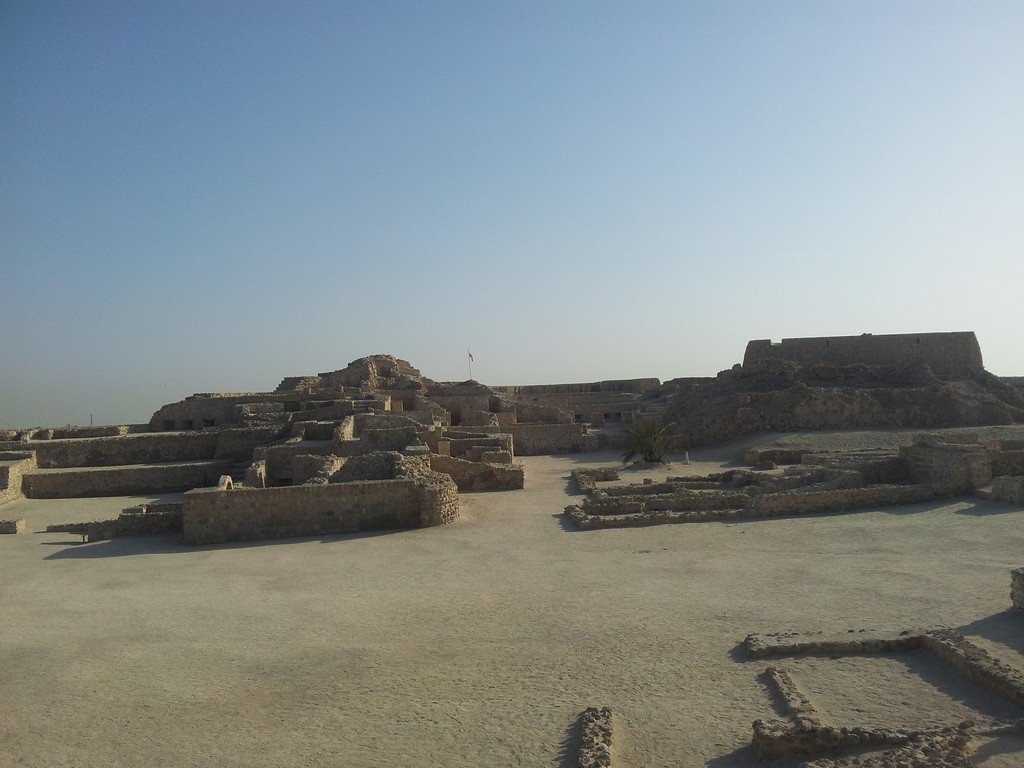
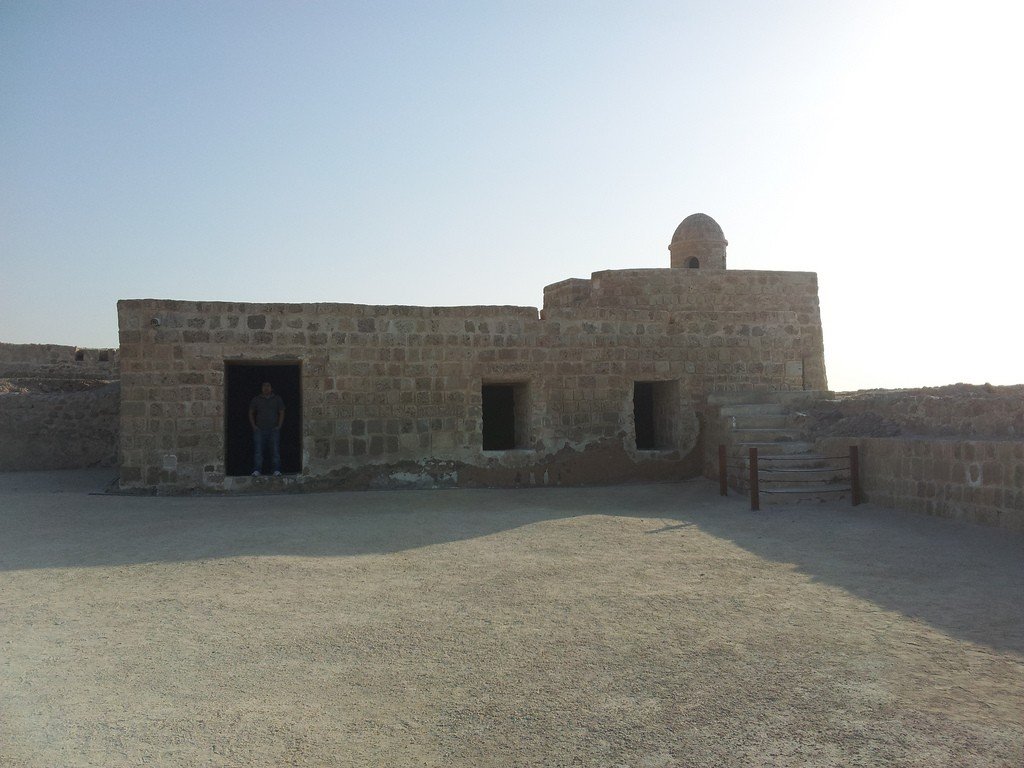
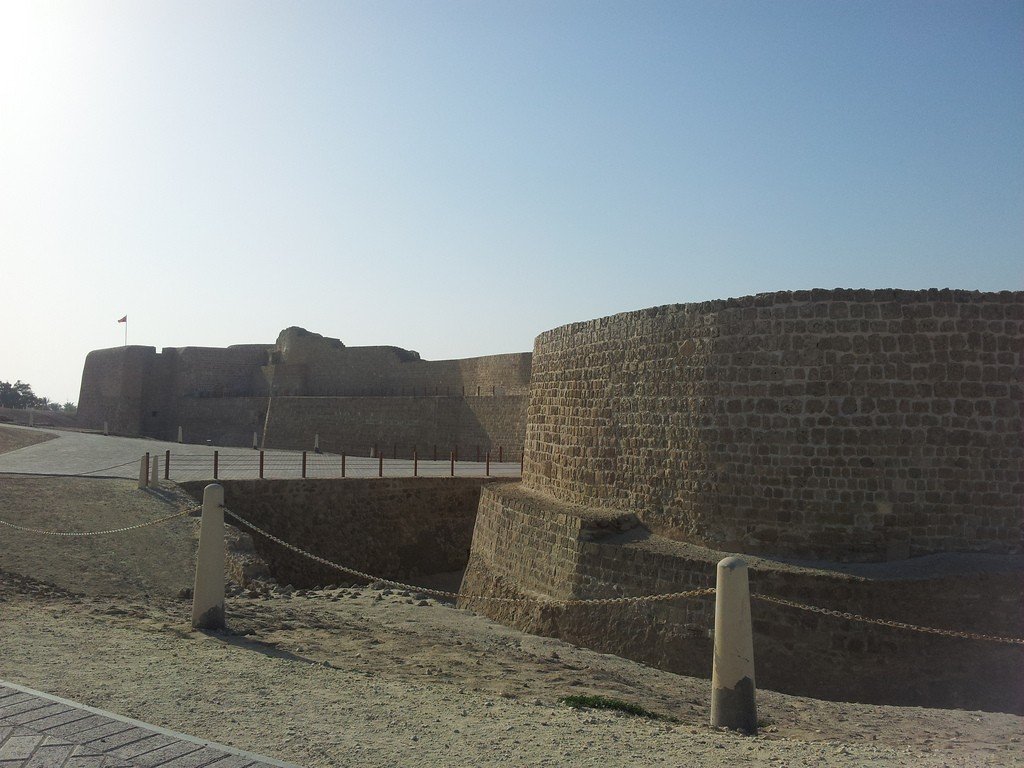
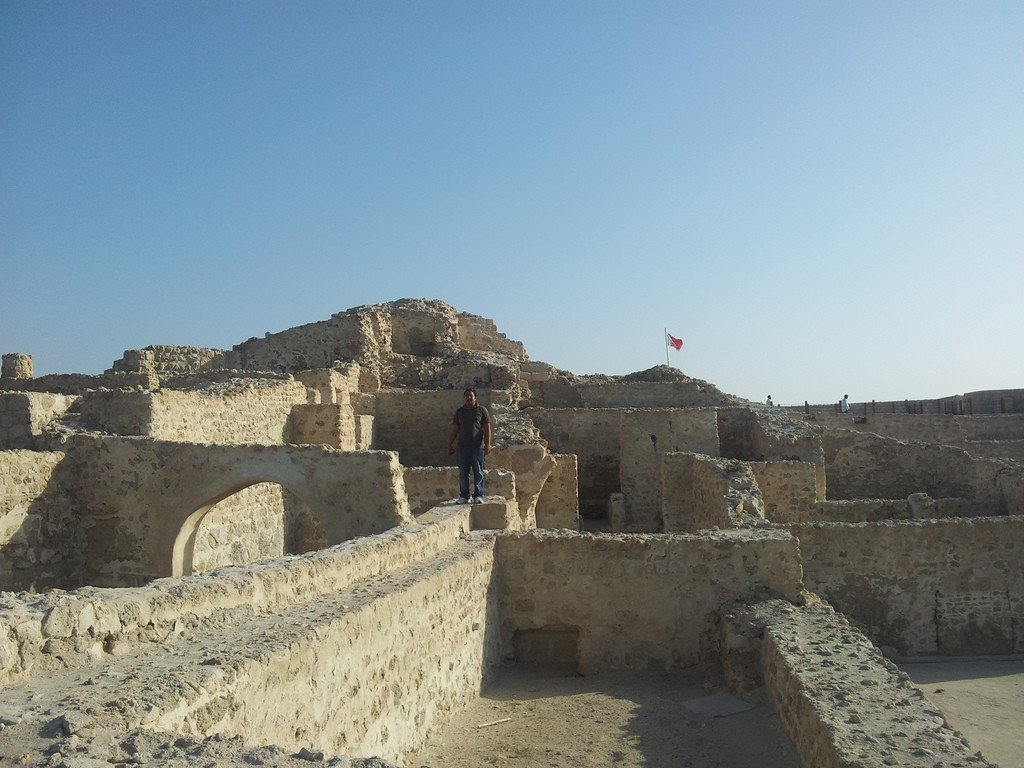
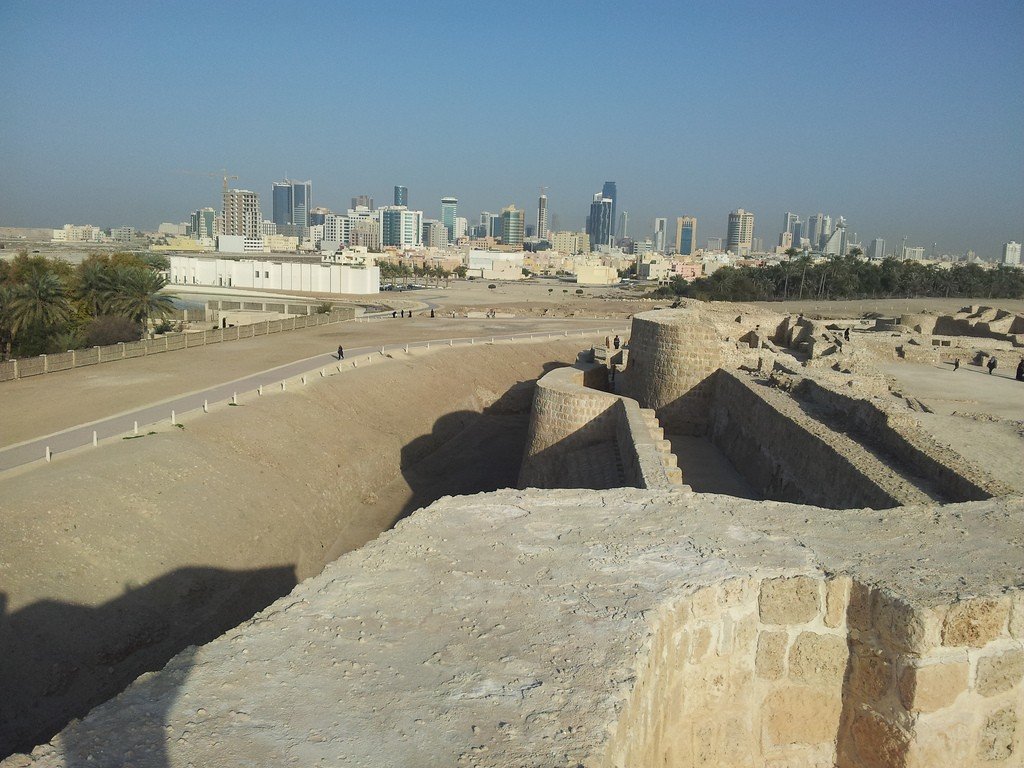
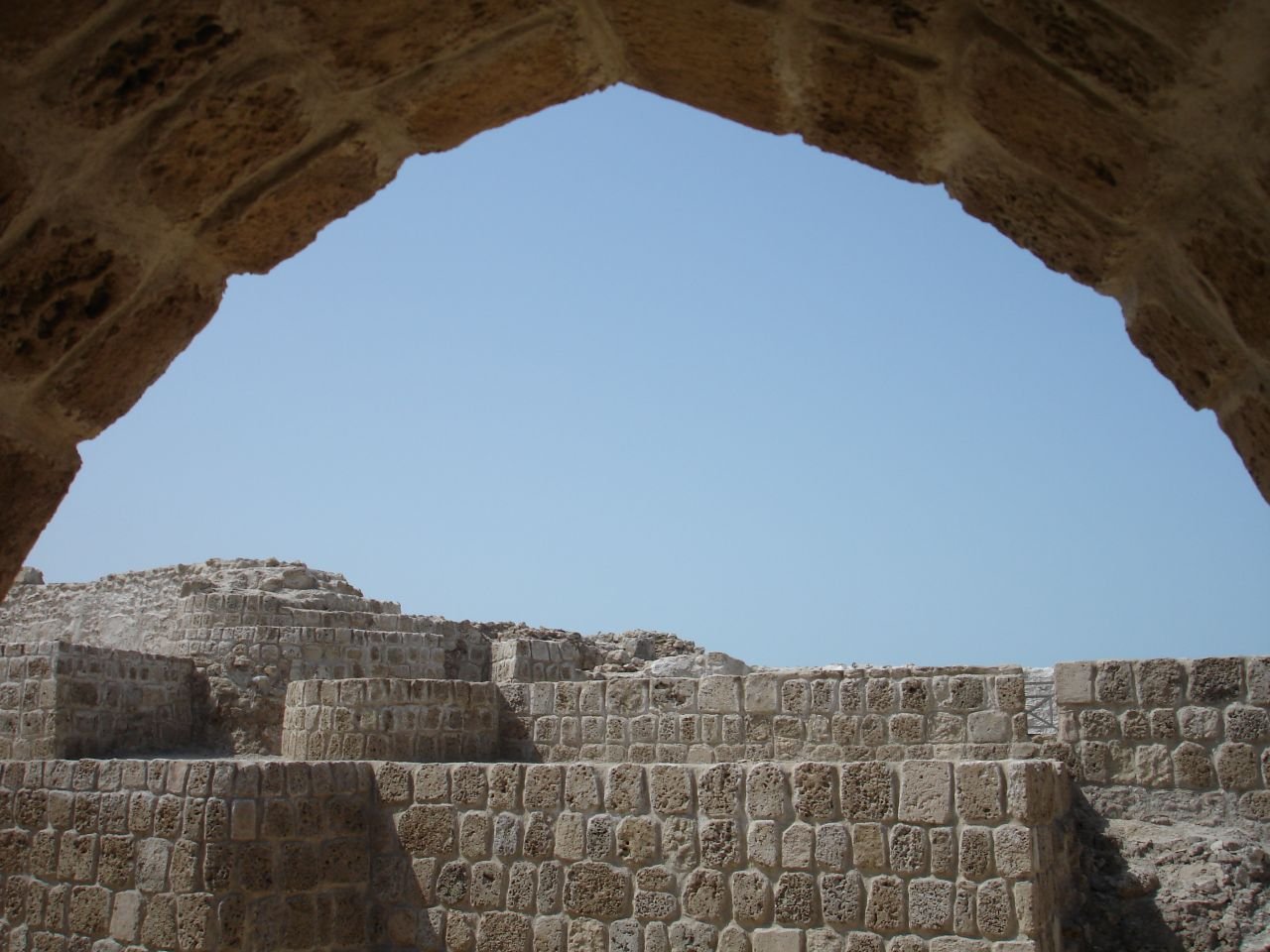
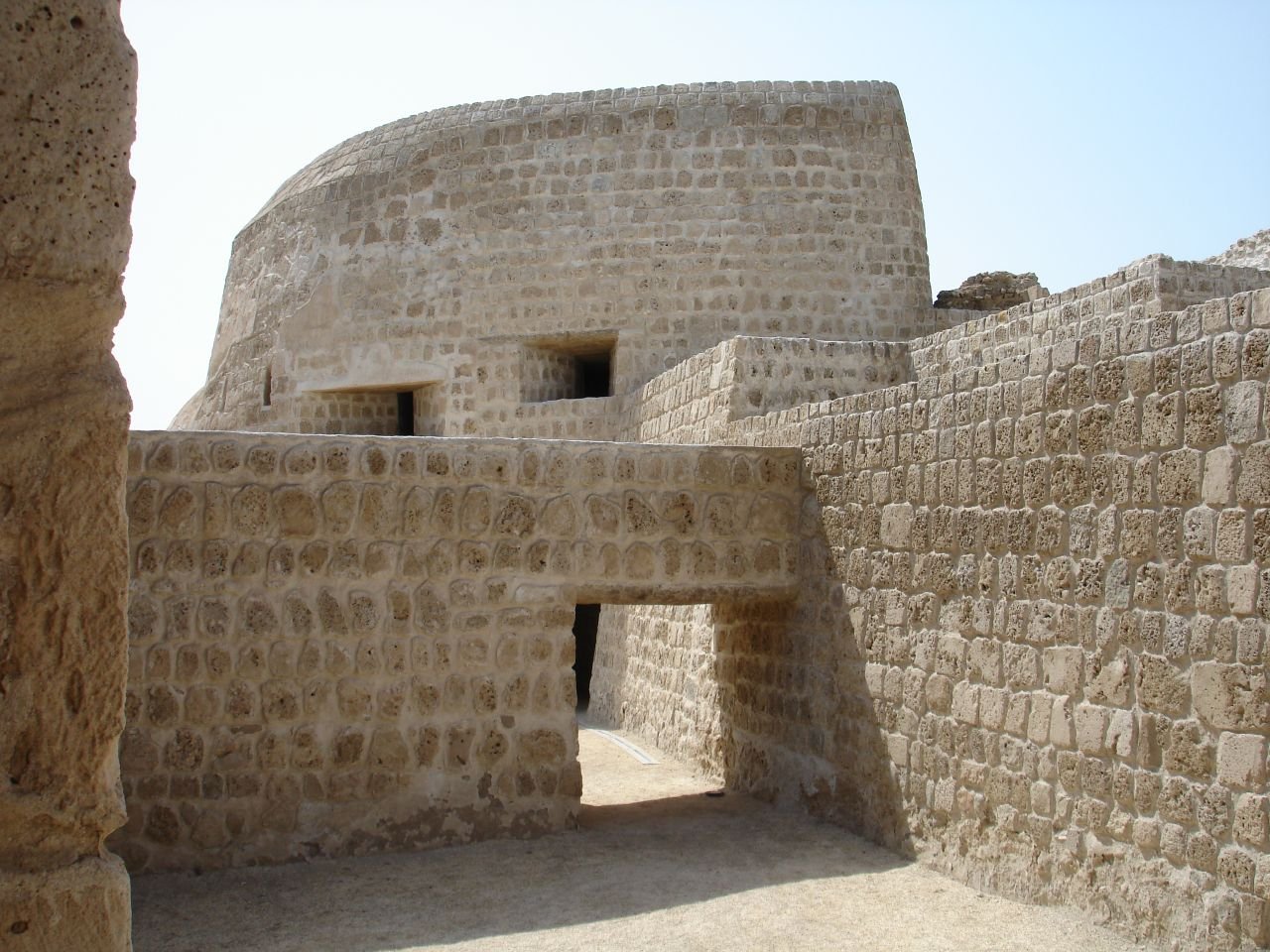
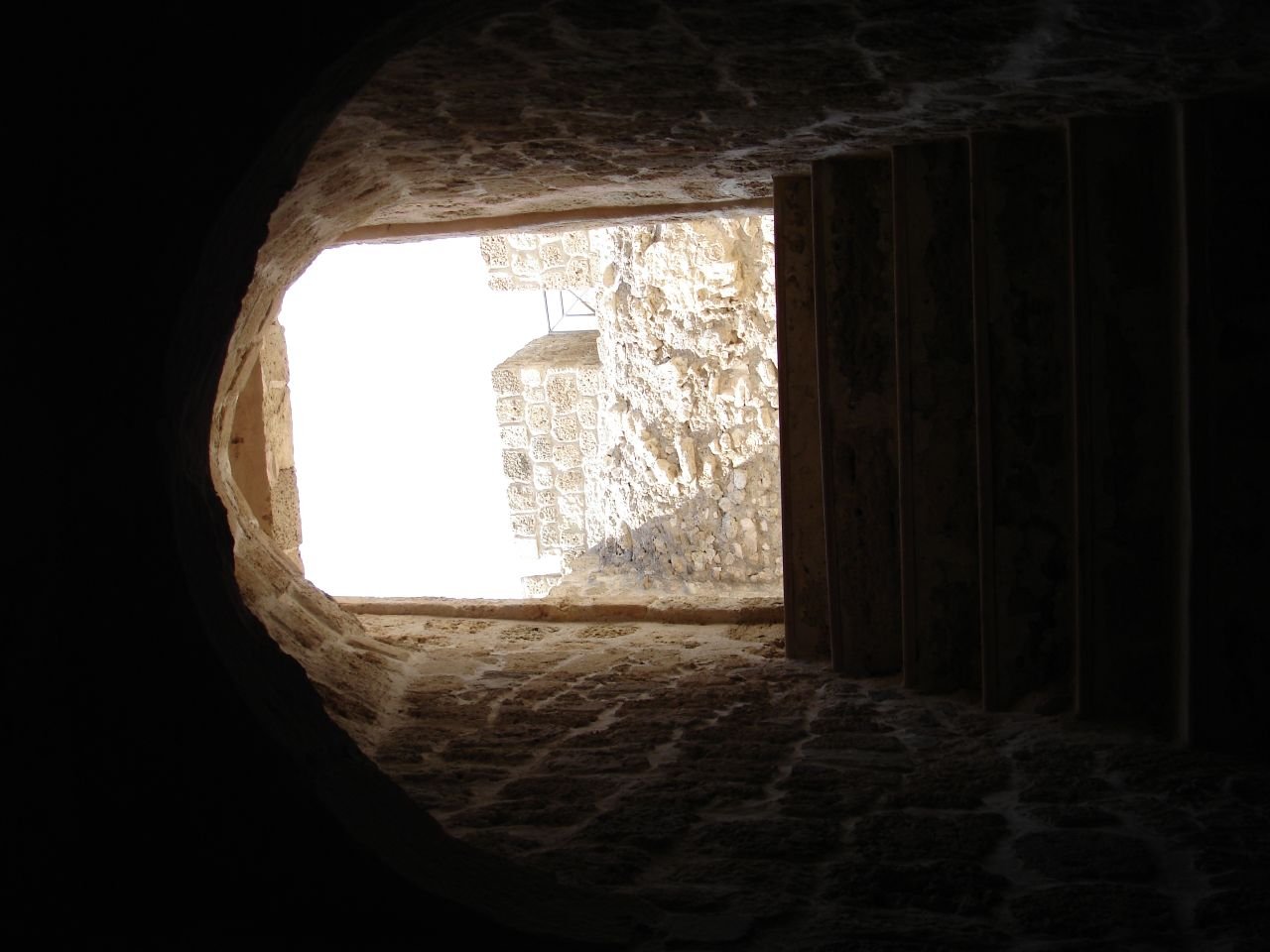
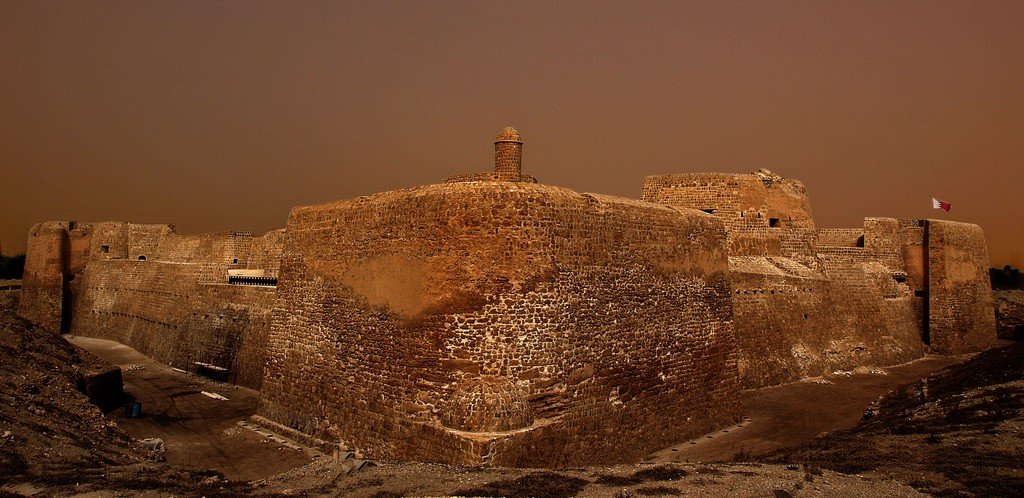
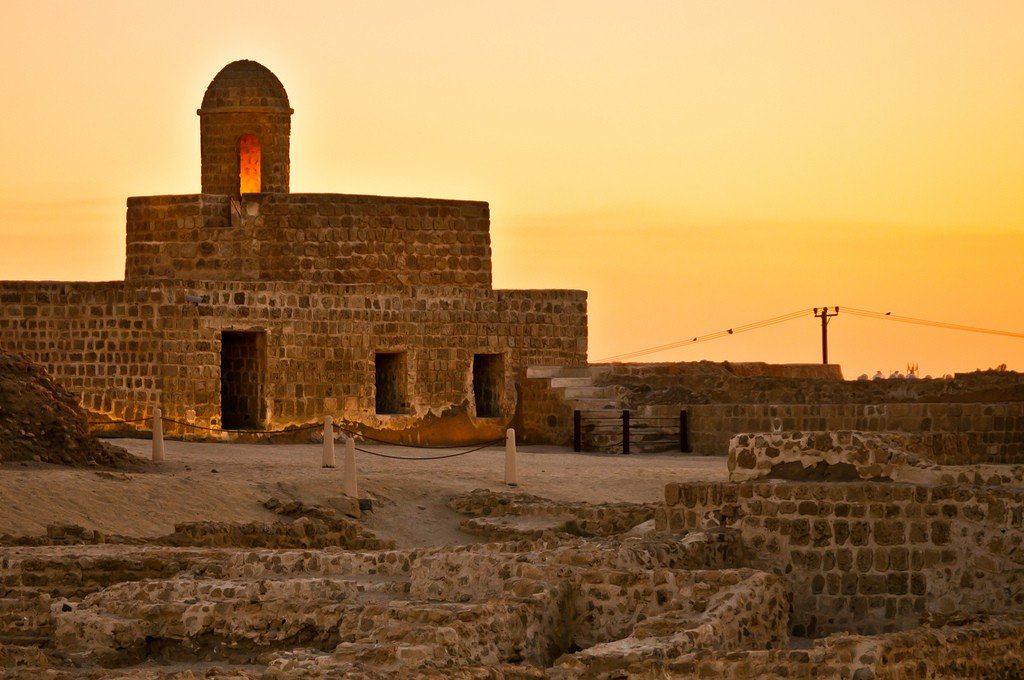
Archaeology
In essence, Qalat al-Bahrain is a typical hillfort created from a series of overlapping cultural layers. A 300 by 600 meter cut allowed the age of the hill to be more precisely established – as mentioned above, the earliest layers date back to 2300 BC. The first fortification was built on the site of the future mound somewhat later – only in the 14th century BC, local Arab princes. By now, archaeologists have discovered many buildings of various kinds – dwellings and public buildings, military barracks and religious institutions.
.
Such diversity once again confirms what, generally speaking, no one doubted – for several centuries Kalat-al-Bahrain was quite an important trading center.
.At the very top of the mound is the Portuguese fort of Kalat-al-Burtugal – actually, the mound as a whole was named in his honor. As the former capital of Dilmun, one of the most important and powerful civilizations of its time, the mound contains a rich collection of everyday objects from a number of different civilizations and cultures. What makes Qalat-al-Bahrain important is the fact that most of the civilizations that contributed to its growth have almost completely disappeared from human memory – only a few lines in Sumerian chronicles can tell us that they once existed at all. Active excavations at the moment are probably the last chance to learn something about these cultures – and that is why they are conducted with all possible care and precision.
.